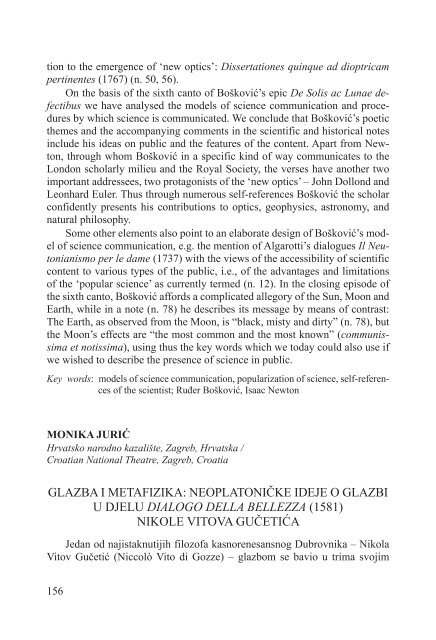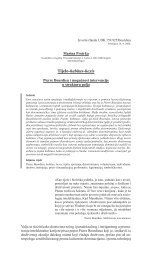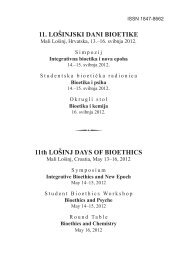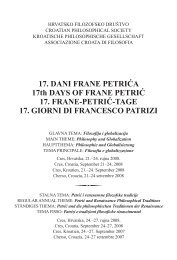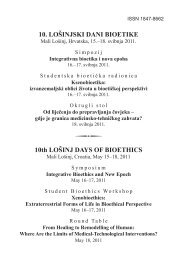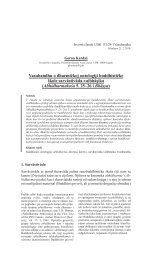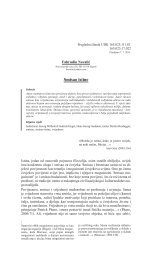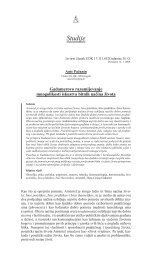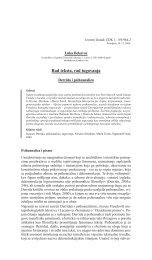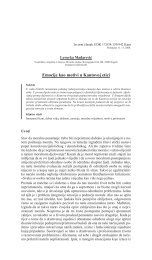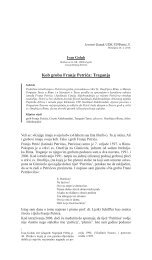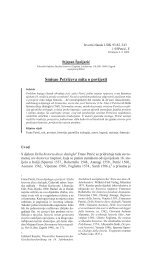Programska knjižica - Hrvatsko filozofsko društvo
Programska knjižica - Hrvatsko filozofsko društvo
Programska knjižica - Hrvatsko filozofsko društvo
Create successful ePaper yourself
Turn your PDF publications into a flip-book with our unique Google optimized e-Paper software.
tion to the emergence of ‘new optics’: Dissertationes quinque ad dioptricam<br />
pertinentes (1767) (n. 50, 56).<br />
On the basis of the sixth canto of Bošković’s epic De Solis ac Lunae defectibus<br />
we have analysed the models of science communication and procedures<br />
by which science is communicated. We conclude that Bošković’s poetic<br />
themes and the accompanying comments in the scientific and historical notes<br />
include his ideas on public and the features of the content. Apart from Newton,<br />
through whom Bošković in a specific kind of way communicates to the<br />
London scholarly milieu and the Royal Society, the verses have another two<br />
important addressees, two protagonists of the ‘new optics’ – John Dollond and<br />
Leonhard Euler. Thus through numerous self-references Bošković the scholar<br />
confidently presents his contributions to optics, geophysics, astronomy, and<br />
natural philosophy.<br />
Some other elements also point to an elaborate design of Bošković’s model<br />
of science communication, e.g. the mention of Algarotti’s dialogues Il Neutonianismo<br />
per le dame (1737) with the views of the accessibility of scientific<br />
content to various types of the public, i.e., of the advantages and limitations<br />
of the ‘popular science’ as currently termed (n. 12). In the closing episode of<br />
the sixth canto, Bošković affords a complicated allegory of the Sun, Moon and<br />
Earth, while in a note (n. 78) he describes its message by means of contrast:<br />
The Earth, as observed from the Moon, is “black, misty and dirty” (n. 78), but<br />
the Moon’s effects are “the most common and the most known” (communissima<br />
et notissima), using thus the key words which we today could also use if<br />
we wished to describe the presence of science in public.<br />
Key words: models of science communication, popularization of science, self-references<br />
of the scientist; Ruđer Bošković, Isaac Newton<br />
MONIKA JURIĆ<br />
<strong>Hrvatsko</strong> narodno kazalište, Zagreb, Hrvatska /<br />
Croatian National Theatre, Zagreb, Croatia<br />
GLAZBA I METAFIZIKA: NEOPLATONIČKE IDEJE O GLAZBI<br />
U DJELU DIALOGO DELLA BELLEZZA (1581)<br />
NIKOLE VITOVA GUČETIĆA<br />
Jedan od najistaknutijih filozofa kasnorenesansnog Dubrovnika – Nikola<br />
Vitov Gučetić (Niccolò Vito di Gozze) – glazbom se bavio u trima svojim<br />
156


